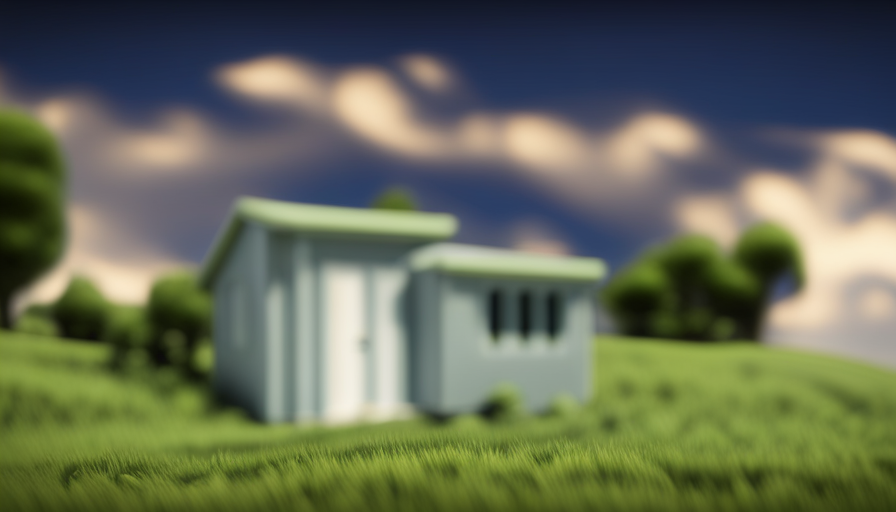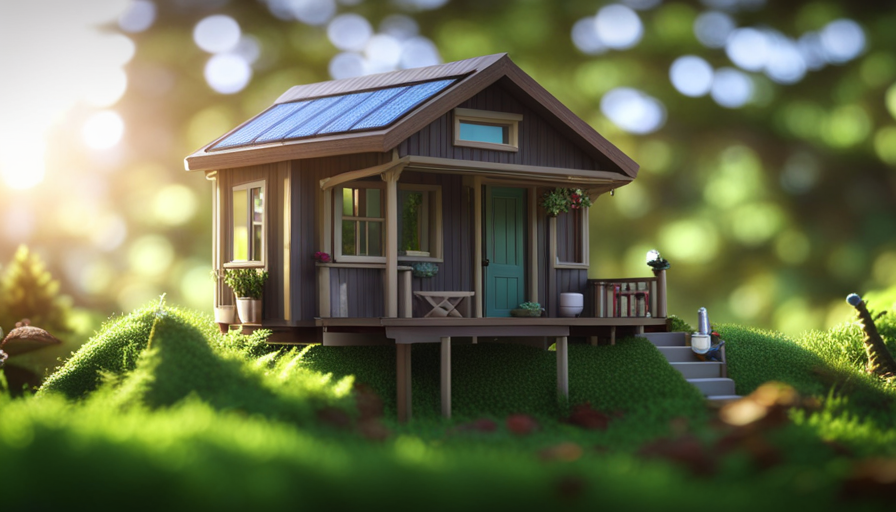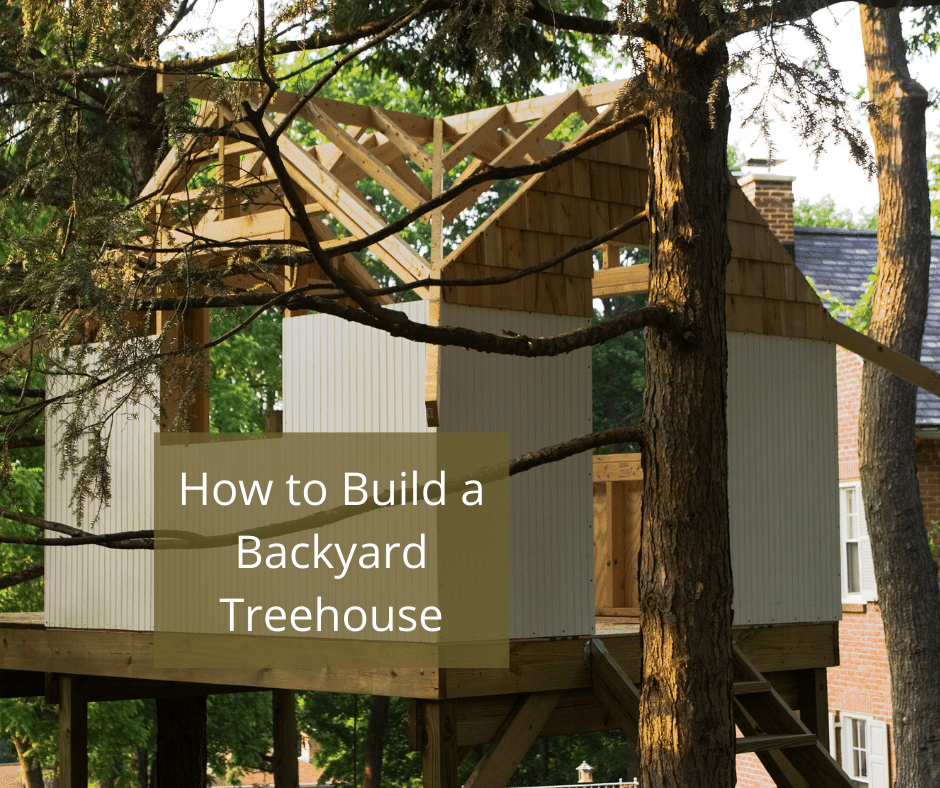There is a famous saying, ‘A house is only as solid as its foundation.’ This concept is just as important when building a tiny house. The anchoring process is crucial in ensuring stability and safety for your compact home.
But how many anchors are required for a tiny house? In this article, I will delve into the intricacies of anchor placement and provide you with valuable insights to help you make informed decisions.
Determining the number of anchors needed depends on various factors, including the weight and size of your tiny house, soil conditions, and potential external forces like wind or seismic activity. Consulting with a structural engineer is essential in assessing these variables accurately.
Additionally, selecting the right type of anchors plays an instrumental role in guaranteeing maximum security. From helical piers to concrete footings, each option offers unique advantages depending on your specific requirements.
By properly installing and regularly inspecting the anchors, you can ensure their longevity and effectiveness. Furthermore, considering additional support systems such as tie-downs or bracing can provide extra stability for peace of mind.
Join me on this journey as we explore the world of anchoring in tiny house construction. Together, we will create a solid foundation that withstands any challenge Mother Nature throws our way.
Key Takeaways
- The number of anchors needed for a tiny house depends on factors such as weight, size, soil conditions, and external forces.
- Consulting with a structural engineer is important for accurately assessing anchor requirements.
- Different types of anchors offer unique advantages based on specific requirements.
- Proper installation, regular inspection, and maintenance of anchors are crucial for stability and safety.
Understanding the Importance of Anchors in Tiny House Construction
You’ll be amazed at how crucial anchors are in the construction of a tiny house, ensuring stability and safety for your cozy abode. The importance of a proper foundation can’t be overstated when it comes to building a tiny house.
Without adequate anchoring, your tiny house is at risk of shifting or even toppling over, especially during extreme weather conditions such as high winds or earthquakes.
The potential risks of inadequate anchoring are numerous. A poorly anchored tiny house can easily become unbalanced and unstable, leading to structural damage and potential collapse. In addition, without proper anchoring, your tiny house may not meet building code requirements, which could result in legal issues or difficulties obtaining insurance coverage.
To avoid these risks, it’s essential to invest in high-quality anchors specifically designed for tiny houses. These anchors should be able to withstand both the weight and movement of your structure. Additionally, they should provide sufficient support to ensure that your tiny house remains firmly grounded.
Determining the weight and size of your tiny house will play a significant role in selecting the appropriate anchors. By assessing these factors accurately, you can choose anchors that match the specific needs of your structure.
Transitioning into the next section about determining the weight and size of your tiny house: Now that we understand the importance of proper anchoring, let’s delve into how you can determine the weight and size requirements for your unique tiny home.
Determining the Weight and Size of Your Tiny House
To accurately determine the weight and dimensions of your compact dwelling, it’s necessary to consider the number of secure fasteners needed. Anchors play a crucial role in ensuring the stability and safety of a tiny house, especially when faced with strong winds or other external forces.
When determining the weight and size of your tiny house, it’s essential to calculate the number of anchors needed based on wind zones. Calculating the number of anchors required involves assessing various factors such as the height and width of your tiny house, its overall weight, and the wind zone classification for your location. Wind zones are defined by specific codes that indicate how much force a structure may experience during severe weather conditions.
By understanding these factors and consulting local building codes or professionals, you can determine the appropriate number and placement of anchors for securing your tiny house. This ensures that it remains firmly rooted to the ground even in high wind areas.
Assessing soil and ground conditions is another crucial step in anchoring a tiny house effectively. By understanding the type of soil on which your tiny house will be situated, you can choose suitable anchor types that provide optimal grip and stability.
With an accurate assessment of both weight/size considerations and soil/ground conditions, you can confidently proceed with securing your tiny house using an appropriate number of anchors.
Assessing the Soil and Ground Conditions
When assessing the soil and ground conditions for your compact dwelling, it’s important to picture a landscape with varying terrain and different types of soil that can impact the stability and grip of your anchors.
It is crucial to evaluate the composition of the soil to determine its load-bearing capacity. Different types of soil, such as clay, sand, or loam, have varying levels of strength and ability to support weight.
Assessing soil composition involves conducting tests to determine its density, moisture content, and shear strength. These tests provide valuable information about how well the ground can hold anchors in place. For example, clay soils are prone to swelling when wet and shrinking when dry, which can affect anchor stability. On the other hand, sandy soils may not provide enough friction for secure anchoring.
Evaluating ground stability is equally important. Factors like slope angle, groundwater level, and nearby trees or structures can influence the overall stability of the ground. Steep slopes or high water tables may require additional measures to ensure proper anchor installation.
By thoroughly assessing both the soil composition and ground stability of your chosen location, you can make informed decisions about the number and type of anchors needed for your tiny house. Consulting with a structural engineer will further enhance your understanding of these factors before proceeding with anchor installation.
Consulting with a Structural Engineer
Consider reaching out to a structural engineer who can provide invaluable expertise and guidance in ensuring the stability and integrity of your compact dwelling. A structural engineer will be able to assess the specific requirements for your tiny house, taking into consideration factors such as its size, weight, and design.
They will evaluate the soil and ground conditions on your property, determining if any special considerations need to be made for anchoring your tiny house.
During consultations with a structural engineer, you can expect discussions regarding the number and type of anchors needed for your tiny house. They will consider the local building codes and regulations, as well as factors like wind loads and seismic activity in your area. This expert advice is crucial in ensuring that your tiny house is properly anchored to prevent shifting or movement over time.
It’s important to note that consulting fees may apply when working with a structural engineer; however, this investment is well worth it when considering the long-term safety and stability of your home. By consulting with an expert on structural requirements, you can have peace of mind knowing that every aspect has been carefully considered.
When discussing anchor options with a structural engineer, they will likely provide recommendations based on their assessment of your specific situation. These recommendations will help guide you in selecting the right type of anchors for your tiny house construction project.
Selecting the Right Type of Anchors for Your Tiny House
Don’t overlook the crucial step of selecting the perfect anchors to ensure the stability and safety of your compact dwelling. Choosing the right anchor type for your tiny house is essential, as it will determine how well your structure can withstand external forces such as wind and earthquakes. Factors to consider when selecting anchors for a tiny house include soil type, local climate conditions, and the weight and design of your tiny house.
To help you make an informed decision, here is a table summarizing different types of anchors commonly used for tiny houses:
| Anchor Type | Description |
|---|---|
| Ground Screw | Designed for sandy or loamy soils, these screws provide excellent resistance against uplift forces. |
| Concrete Pier | Suitable for areas with rocky or clayey soils, piers offer stability by transferring weight deep into the ground. |
| Mobile Home Anchor | These auger-style anchors are ideal for lightweight structures and can be easily installed in most soil types. |
| Helical Anchor | Best suited for softer soils, helical anchors use a corkscrew-like design to provide exceptional holding capacity. |
| Earthquake Tie-Downs | Specifically designed to resist seismic forces, these tie-downs secure your tiny house during earthquakes. |
Choosing the right anchor type requires careful consideration of all relevant factors. Once you have selected the appropriate anchor type(s), you can proceed to calculate the number of anchors needed based on wind zones.
Transitioning into the subsequent section about calculating anchor quantities without explicitly stating ‘step,’ let’s explore how we can determine the number of anchors required to ensure optimal stability in different wind zones.
Calculating the Number of Anchors Needed Based on Wind Zones
To ensure optimal stability in different wind zones, it’s crucial to accurately calculate the number of anchors you’ll need based on the specific conditions.
Calculating anchor requirements involves a thorough wind zone analysis. First, determine the wind speed for your area by consulting local building codes or contacting a professional.
Next, consider the size and weight of your tiny house as these factors will affect the force exerted by strong winds. The shape and height of your structure also play a role in determining anchor requirements. A taller and more exposed tiny house will require more anchors compared to a shorter one nestled among trees.
Once you have gathered all the necessary information, consult an engineering guide or expert to find out how many anchors are needed per square foot of your tiny house. These calculations take into account factors such as soil composition and terrain slope that can impact anchor performance.
Calculating the correct number of anchors is essential for ensuring the safety and stability of your tiny house during high winds. With this information in hand, you can proceed to properly installing and securing the anchors without compromising structural integrity or putting yourself at risk.
Properly Installing and Securing the Anchors
When it comes to ensuring the safety and stability of your compact dwelling in high winds, properly installing and securing the anchors is paramount. The success of anchor installation techniques greatly depends on using the right materials and following specific guidelines.
One common method involves using earth anchors, which are typically made of steel and designed to penetrate deep into the ground for maximum stability. These anchors can be installed by driving them into the soil with a mallet or by using machinery like a powered post driver.
Another technique is the use of concrete deadman anchors. These types of anchors require digging a hole, placing a wooden or metal plate at the bottom, pouring concrete over it, and then attaching straps or cables from the tiny house to the anchor plate. This method provides excellent stability when properly executed.
Regardless of which type of anchor you choose, it’s crucial to ensure that they are securely fastened to your tiny house structure. This can be done using strong bolts or screws that firmly attach the anchor points to your building’s foundation or frame.
By using proper installing techniques and quality anchor materials, you can significantly increase your tiny house’s resistance against strong winds. However, it’s important not only to focus on initial installation but also regularly inspecting and maintaining these anchors for long-term security and peace of mind as you continue living in your cozy abode.
Regularly Inspecting and Maintaining the Anchors
When it comes to properly installing and securing the anchors for a tiny house, there are several important steps to follow. However, it doesn’t just stop there. Regularly inspecting and maintaining the anchors is crucial to ensure their effectiveness and longevity.
Inspecting the anchors on a regular basis is essential in identifying any signs of wear or damage. This includes checking for rust, corrosion, or any loose connections. It’s important to thoroughly examine each anchor point, paying close attention to the bolts and brackets that hold them in place.
Maintaining the anchors involves taking proactive measures to prevent issues from arising. This can include cleaning and lubricating moving parts regularly, ensuring that all connections are tightened properly, and replacing any worn-out components as needed.
By inspecting and maintaining the anchors regularly, you can significantly reduce the risk of structural instability or failure. This not only protects your investment but also ensures your safety while living in your tiny house.
Now that we’ve covered how to properly install and secure the anchors, as well as how to inspect and maintain them effectively, let’s move on to considering additional support systems for extra stability without compromising convenience or cost-effectiveness.
Considering Additional Support Systems for Extra Stability
Adding extra support systems to your tiny house is like adding a sturdy foundation to a towering skyscraper, providing the stability needed for peace of mind. While anchors play a crucial role in securing your tiny house, considering additional reinforcement can further enhance its stability. Here are three alternative support systems that you should consider:
-
Skirting: Installing skirting around the base of your tiny house not only adds aesthetic appeal but also helps distribute weight evenly and prevent shifting or tilting. This additional layer of protection acts as a barrier against wind and moisture, minimizing the risk of structural damage.
-
Tie-Downs: Utilizing tie-downs in conjunction with anchors can greatly increase the stability of your tiny house. These straps, made from durable materials such as steel or polyester webbing, provide an extra layer of security by anchoring your structure to the ground.
-
Bracing Systems: Incorporating bracing systems into your tiny house design can significantly improve its resistance to lateral forces, ensuring it remains stable during strong winds or seismic activities. From diagonal braces to shear walls, these reinforcements help distribute loads more evenly and reduce potential structural damage.
By considering these additional support systems, you can enhance the overall stability and safety of your tiny house while ensuring peace of mind for years to come.
Transitioning into the subsequent section about ensuring safety and peace of mind in your tiny house, let’s explore other essential factors that contribute to an ideal living environment without compromising on comfort or security.
Ensuring Safety and Peace of Mind in Your Tiny House
To ensure ultimate peace of mind and a secure living environment, it’s important to prioritize safety in your cozy abode. When it comes to constructing a tiny house, choosing the right materials is crucial.
Opt for sturdy and durable options such as steel or reinforced concrete for the foundation and structural elements. These materials provide excellent strength and stability, ensuring that your tiny house can withstand various weather conditions.
Incorporating fire safety measures in your tiny house design is also essential. Install smoke detectors throughout the space, ensuring they are strategically placed near sleeping areas and kitchen spaces. Additionally, consider using fire-resistant materials for your walls, floors, and insulation. This will help minimize the risk of fire spreading quickly within the confined space of a tiny house.
Furthermore, having an easily accessible fire extinguisher inside your tiny house is highly recommended. Make sure you understand how to operate it correctly and regularly check its expiration date. It’s also advisable to have a well-thought-out escape plan in case of emergencies.
By carefully selecting construction materials and incorporating fire safety measures into your tiny house design, you can enhance both the structural integrity and overall safety of your cozy dwelling.
Frequently Asked Questions
How much does it cost to consult with a structural engineer for anchor selection in tiny house construction?
Consulting with a structural engineer for anchor selection in tiny house construction is highly recommended. The cost of this consultation varies depending on the complexity of the project and the engineer’s experience. However, it’s a worthwhile investment as it ensures the correct selection of anchor materials based on the specific needs and requirements of your tiny house.
This expert guidance can prevent future structural issues, ensuring the safety and longevity of your home.
Can I use the same type of anchors for both sandy and rocky soil conditions?
An interesting statistic shows that sandy soil makes up about 47% of the Earth’s land surface, while rocky soil accounts for approximately 27%. When considering anchor selection for a tiny house in different soil conditions, it’s important to note that the same type of anchors may not be suitable for both sandy and rocky soil.
Anchors designed specifically for sandy soil are typically longer and have wider blades to provide better stability. On the other hand, anchors for rocky soil are often shorter with stronger materials to penetrate through tough ground.
Therefore, it’s crucial to choose the appropriate anchors based on the specific soil conditions encountered during construction.
Are there any alternative methods to securing anchors for a tiny house?
There are alternative methods and innovative solutions available for securing anchors for a tiny house. In addition to traditional anchor systems like helical piers or ground screws, you could consider using earthbags, which are durable bags filled with soil or sand.
Another option is the use of concrete footings or blocks as anchors. These alternatives provide stability and security in various soil conditions, ensuring the safety of your tiny house without solely relying on a specific number of anchors.
How often should I inspect and maintain the anchors of my tiny house?
Inspecting and maintaining the anchors of a tiny house is crucial for its stability and safety. Regular inspections should be conducted to ensure that the anchors are securely fastened and in good condition. It is recommended to inspect the anchors at least once every six months or after any severe weather events.
When selecting anchors, consider factors such as soil type, wind load, and weight of the tiny house to ensure they’re appropriate for your specific needs.
What are the potential risks or consequences of not properly securing the anchors in a tiny house?
Not properly securing the anchors in a tiny house can have serious consequences. One interesting statistic to consider is that 70% of structural failures in small dwellings are due to improper anchoring. This highlights the importance of correctly securing the anchors.
The potential risks include structural instability, leading to an increased likelihood of collapse or damage during extreme weather conditions. Additionally, inadequate anchoring can cause damage to the foundation, resulting in costly repairs and compromised safety.
Conclusion
In conclusion, it’s crucial to recognize the vital role that anchors play in the construction of a tiny house. By carefully determining the weight and size of your structure, assessing soil and ground conditions, consulting with a structural engineer, and selecting the appropriate type of anchors, you can ensure its stability.
Proper installation and regular maintenance are essential for long-lasting security. Additionally, considering additional support systems will provide extra peace of mind.
Remember, creating a safe haven in your tiny house is like tending to a delicate garden – nurturing its foundation with strong anchors ensures its vibrant growth.
Hi, I’m Emma. I’m the Editor in Chief of Tiny House 43, a blog all about tiny houses. While tree houses are often associated with childhood, they can be the perfect adult retreat. They offer a cozy space to relax and unwind, surrounded by nature. And since they’re typically built on stilts or raised platforms, they offer stunning views that traditional homes simply can’t match. If you’re looking for a unique and romantic getaway, a tree house tiny house might just be the perfect option.















